Cocoa, derived from the cacao bean, has gained attention for its potential benefits in protecting the skin against the harmful effects of UV radiation. This article will explore the scientific evidence behind cocoa’s role in safeguarding the skin and examine whether it can serve as an effective natural solution for UV protection. By examining the nutritional profile of cocoa, the mechanisms by which it may shield the skin, and the latest research on the topic, readers will gain a comprehensive understanding of cocoa’s capacity to mitigate UV damage.
But can this beloved ingredient truly help shield our skin from the sun’s harsh rays? Dive in to uncover the surprising link between cocoa and UV protection.
Key Takeaways
- Cocoa is rich in antioxidants, particularly flavanols, that may play a role in protecting the skin from UV damage.
- Research suggests cocoa can help address signs of photoaging, such as wrinkles and age spots, and potentially reduce the risk of skin cancer.
- Incorporating cocoa into your diet through dark chocolate, cocoa powder, or cocoa nibs may provide beneficial UV-shielding effects.
- Cocoa should be consumed in moderation, as it may interact with certain medications or have side effects for some individuals.
- While cocoa shows promise, it should be used in conjunction with other proven sun protection methods for comprehensive skin health.
Introduction to Cocoa and Its Potential Benefits
Cocoa, a rich and flavorful powder, is derived from the fermented and dried seeds of the cacao tree. Cocoa is renowned for its high concentration of polyphenol antioxidants, particularly flavanols, which have been linked to a wide range of health benefits. This section will provide an overview of the composition and nutritional value of cocoa, setting the stage for understanding its potential role in protecting the skin from UV damage.
What is Cocoa?
Cocoa is a rich, aromatic powder that is produced by fermenting, drying, and processing the seeds of the cacao tree. These seeds, also known as cocoa beans, are the primary ingredient in a variety of beloved chocolate products. Beyond its delectable flavor, cocoa is a veritable treasure trove of beneficial nutrients and compounds, including antioxidants, vitamins, and minerals.
Nutritional Value of Cocoa
The nutritional profile of cocoa is quite impressive, making it a valuable addition to a balanced diet. Cocoa is particularly rich in flavanols, a subclass of polyphenol antioxidants that have been extensively studied for their potential health benefits. These antioxidants play a crucial role in neutralizing free radicals and reducing oxidative stress, which are key factors in the development of various health conditions, including skin damage from UV exposure.
In addition to its high antioxidant content, cocoa also contains a variety of essential nutrients, such as fiber, iron, magnesium, and copper. These nutrients contribute to overall health and may have additional benefits for the skin and its ability to withstand the harmful effects of UV radiation.
Understanding UV Radiation and Its Effects
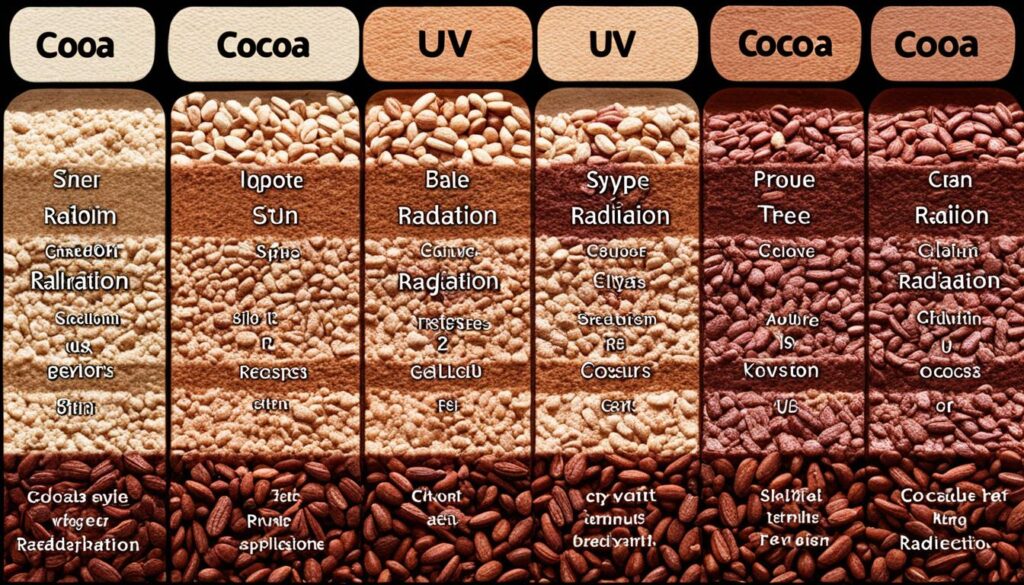
The sun’s rays emit various forms of ultraviolet (UV) radiation, each with its unique characteristics and impact on the skin. To fully comprehend how cocoa can protect against UV damage, it’s essential to delve into the different types of UV radiation and their corresponding effects.
Types of UV Radiation
UV radiation is typically classified into three main categories: UVA, UVB, and UVC. UVA radiation has the longest wavelength, ranging from 315 to 400 nanometers (nm), and can penetrate deep into the skin, contributing to premature aging and wrinkle formation. UVB radiation has a shorter wavelength, from 280 to 315 nm, and primarily affects the outer layer of the skin, causing sunburns and an increased risk of skin cancer. UVC radiation, with the shortest wavelength of 100 to 280 nm, is the most harmful, but it is largely absorbed by the Earth’s atmosphere and does not reach the surface.
Harmful Effects of UV Exposure
Prolonged exposure to UV radiation can have numerous detrimental effects on the skin, including:
- Photoaging: UV exposure can accelerate the skin’s aging process, leading to the development of fine lines, wrinkles, and age spots.
- Sunburns: UVB radiation can cause painful, reddened skin, which can lead to peeling and increased sensitivity.
- Skin Cancer: UV exposure is a major risk factor for various types of skin cancer, such as melanoma, basal cell carcinoma, and squamous cell carcinoma.
- Oxidative Stress: UV radiation can generate free radicals and cause oxidative stress, which can damage skin cells and DNA, contributing to the aging process and increasing the risk of skin cancer.
Understanding the distinct characteristics of UV radiation and its multifaceted impact on the skin is crucial in evaluating the potential of cocoa to serve as a natural defense against the harmful effects of sun exposure.
Can Cocoa Help in Protecting Against UV Damage?
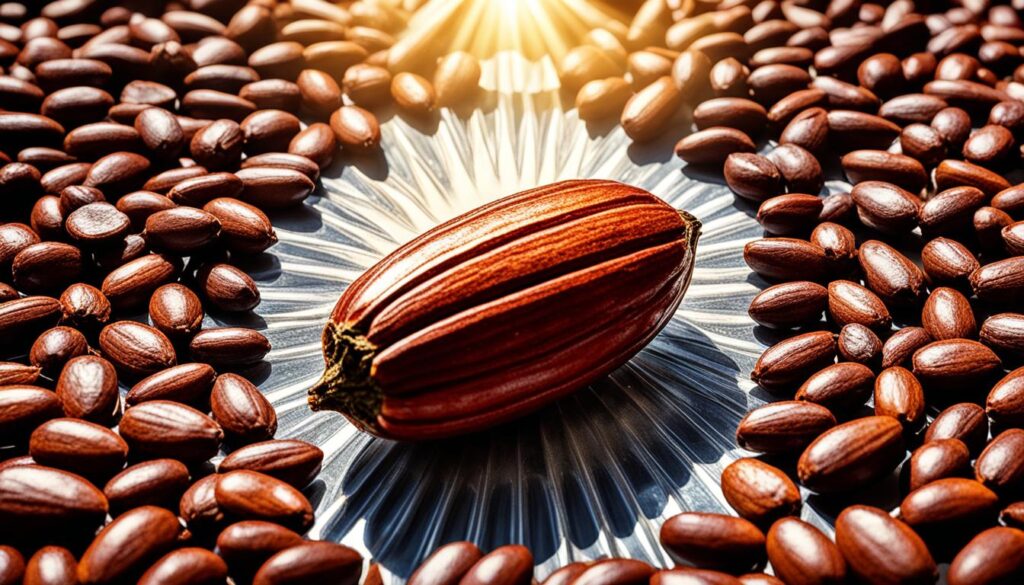
The central question this article aims to address is whether cocoa can indeed help protect the skin against the harmful effects of UV radiation. Cocoa, known for its rich, flavorful profile, has been the subject of growing interest for its potential benefits in safeguarding the skin from the damaging impacts of UV exposure.
Emerging research suggests that the antioxidant-rich compounds found in cocoa may play a crucial role in shielding the skin from the ravages of UV damage. By delving deeper into the scientific evidence and exploring the underlying mechanisms behind cocoa’s UV-protective properties, this section will set the stage for a comprehensive understanding of its potential as a natural sunscreen alternative.
As the article progresses, readers will gain valuable insights into the specific ways in which cocoa may defend the skin against the harmful effects of UV radiation, from its potent antioxidant profile to its ability to mitigate the signs of photoaging and reduce the risk of skin cancer. By exploring the latest research and understanding the science behind cocoa’s UV-shielding capabilities, we can uncover its true potential as a natural solution for protecting the skin from the sun’s harmful rays.
Antioxidants in Cocoa and Their Role

Cocoa, the key ingredient in chocolate, is renowned for its impressive nutritional profile, particularly its abundance of antioxidants. At the heart of cocoa’s potential benefits for skin health are a class of powerful polyphenol antioxidants called flavanols. These unique compounds have garnered significant attention from researchers and health enthusiasts alike for their ability to defend the skin against the damaging effects of ultraviolet (UV) radiation.
Flavanols: The Powerful Antioxidants in Cocoa
Cocoa is an exceptionally rich source of flavanols, a subgroup of polyphenol antioxidants. These antioxidants are known for their remarkable ability to neutralize free radicals and mitigate oxidative stress, which are primary contributors to UV-induced skin damage. Flavanols, such as epicatechin and catechin, have demonstrated potent anti-inflammatory and photoprotective properties in numerous studies, suggesting their potential role in safeguarding the skin against the harmful effects of sun exposure.
How Antioxidants Help Protect Against UV Damage
The antioxidants in cocoa play a crucial role in defending the skin against the deleterious effects of UV radiation. When the skin is exposed to UV light, it can lead to the generation of reactive oxygen species (ROS), also known as free radicals. These unstable molecules can cause oxidative damage to the skin’s cellular structures, leading to premature aging, wrinkles, and an increased risk of skin cancer. Cocoa flavanols have the ability to neutralize these free radicals, mitigating the oxidative stress and providing a layer of protection against the detrimental consequences of UV exposure.
Furthermore, research suggests that antioxidants and UV protection go hand in hand. By scavenging and neutralizing the harmful free radicals generated by UV radiation, the antioxidants in cocoa can help reduce inflammation, DNA damage, and other underlying mechanisms that contribute to skin aging and cancer development. This comprehensive approach to defending the skin makes cocoa a promising natural ally in the quest for effective UV protection.
Cocoa and Skin Health
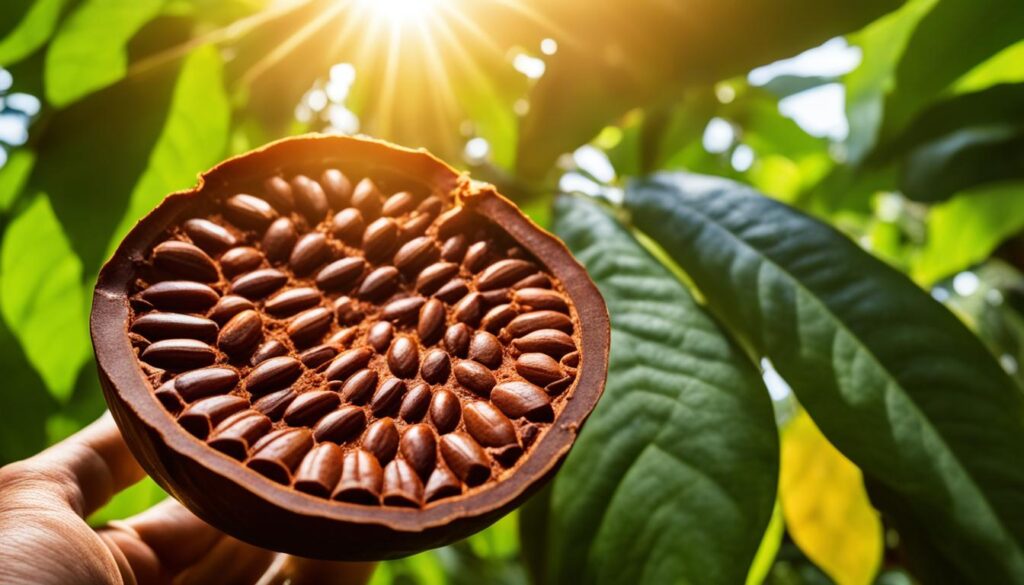
Beyond its potential for UV protection, cocoa has also been the subject of extensive research exploring its broader implications for skin health. From addressing signs of photoaging to potentially reducing the risk of skin cancer development, the versatile compound found in cocoa is proving to be a valuable asset in the realm of dermatological wellbeing.
Cocoa and Photoaging
The antioxidant-rich nature of cocoa has been linked to its ability to mitigate the visible signs of premature skin aging, commonly referred to as photoaging. Studies have shown that the flavanols present in cocoa can help combat the formation of wrinkles, age spots, and other telltale signs of sun damage, ultimately promoting a more youthful and radiant complexion.
Cocoa and Skin Cancer Prevention
Emerging research suggests that cocoa may also play a role in reducing the risk of skin cancer development. The powerful antioxidants in cocoa are believed to possess the capacity to shield the skin from the damaging effects of UV radiation, which is a leading contributor to the formation of cancerous lesions. By neutralizing free radicals and enhancing the skin’s natural defenses, cocoa may offer a natural solution for skin cancer prevention.
As the scientific community continues to explore the multifaceted benefits of cocoa, the potential for this versatile ingredient to safeguard and nourish the skin becomes increasingly evident. By incorporating cocoa into one’s daily routine, individuals can take a proactive step towards skin health and the prevention of photoaging and skin cancer.
Incorporating Cocoa into Your Diet
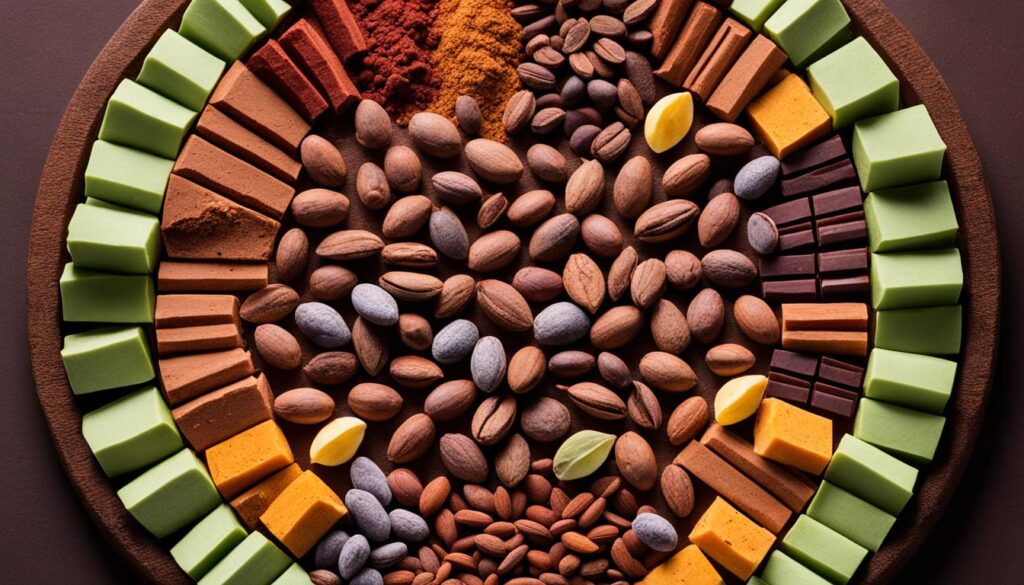
If cocoa does indeed possess the capacity to protect the skin from UV damage, it is essential to understand how to effectively incorporate it into your diet. From dark chocolate to cocoa powder and nibs, there are various types of cocoa products available that can help you harness the potential benefits of this versatile ingredient.
Types of Cocoa Products
When it comes to consuming cocoa, the most well-known option is dark chocolate. Dark chocolate is rich in cocoa solids, providing a higher concentration of the beneficial flavanols and antioxidants. Cocoa powder, on the other hand, is a versatile ingredient that can be added to smoothies, baked goods, or even sprinkled over your morning oatmeal. For a more concentrated dose of cocoa, cocoa nibs, which are the crushed, roasted cocoa beans, can be a great choice.
Recommended Daily Intake
When it comes to recommended cocoa intake for skin health, the research is still ongoing. However, many studies suggest that consuming 20-50 grams of dark chocolate or 10-20 grams of cocoa powder per day can provide significant antioxidant benefits and potentially contribute to UV protection. It’s important to keep in mind that the specific cocoa in diet recommendations may vary based on individual factors, such as body weight, overall health, and other dietary considerations.
By incorporating these types of cocoa products into your daily routine and following the recommended cocoa intake, you can potentially harness the skin-protecting benefits of this remarkable ingredient and enjoy its delicious flavor at the same time.
Potential Side Effects and Precautions
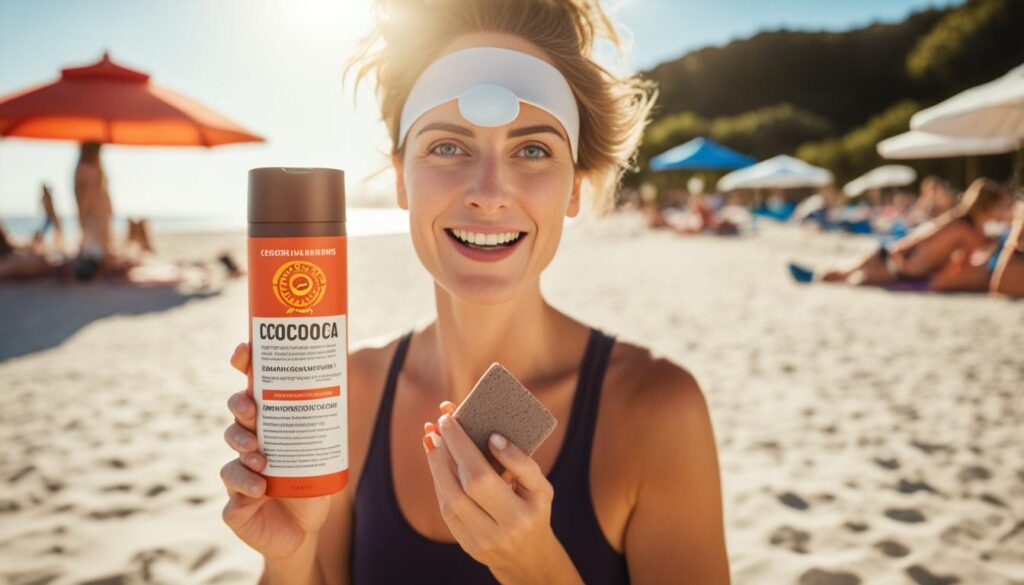
While cocoa is generally considered safe for consumption, it’s important to be aware of potential side effects of cocoa and precautions associated with its use. For most people, consuming cocoa in moderation is not a concern, but there are a few groups who should exercise precautions with cocoa consumption.
Individuals with caffeine sensitivity may want to limit their cocoa intake, as cocoa contains small amounts of caffeine. Those with digestive issues like acid reflux or irritable bowel syndrome may also find that large doses of cocoa can exacerbate their symptoms. Additionally, people who should avoid cocoa include those with a history of migraines, as the tyramine in cocoa can potentially trigger headaches.
Pregnant women and children should consult their healthcare providers before significantly increasing their cocoa consumption, as the effects on these populations are not yet fully understood. Furthermore, individuals with certain medical conditions, such as heart disease or diabetes, may need to monitor their cocoa intake and should discuss it with their doctors.
Overall, the safety of cocoa is generally well-established, but as with any dietary change, it’s essential to be mindful of personal sensitivities and potential interactions with existing health conditions. By understanding these precautions with cocoa consumption, individuals can make informed decisions about incorporating this versatile ingredient into their lifestyle in a way that promotes overall well-being.
Scientific Research and Studies
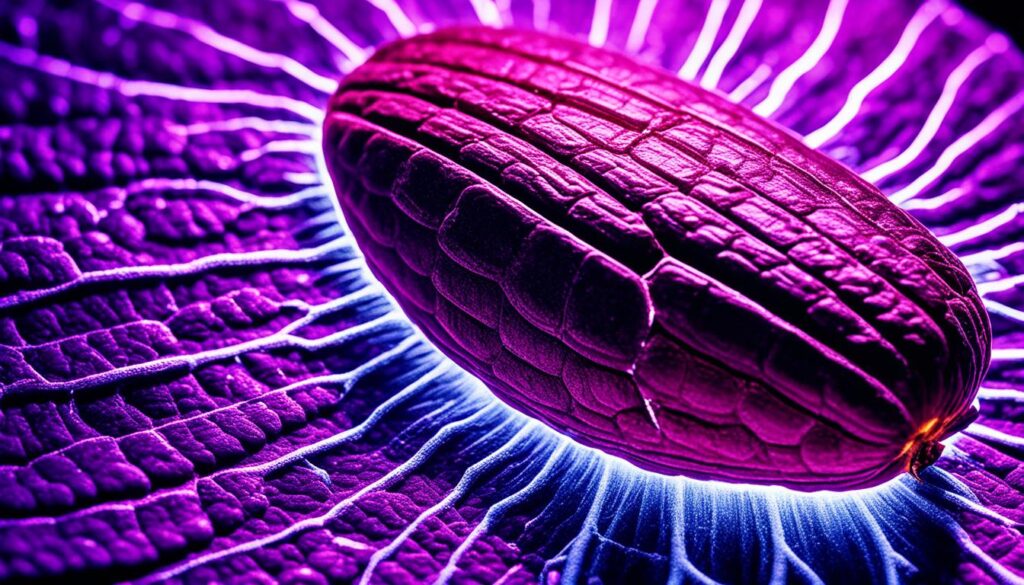
As researchers continue to explore the potential benefits of cocoa, a growing body of scientific evidence has shed light on its role in protecting the skin against the harmful effects of UV radiation. Several clinical trials have been conducted to assess the efficacy of cocoa-derived compounds in safeguarding the skin from UV damage.
Clinical Trials on Cocoa and UV Protection
One notable study by Actis-Goretta et al. (2006) found that flavanol-rich foods, including cocoa, exhibited an inhibition of angiotensin-converting enzyme activity, suggesting potential health benefits. Similarly, Baba et al. (2007) observed altered plasma LDL and HDL cholesterol levels, as well as reduced oxidized LDL concentrations, in individuals consuming different levels of cocoa powder. These findings indicate that the antioxidant compounds in cocoa may play a role in protecting the skin from the damaging effects of UV exposure.
Additionally, a study by Almoosawi et al. (2010) examined the impact of polyphenol-rich dark chocolate on various health markers, including fasting capillary whole blood glucose, total cholesterol, blood pressure, and glucocorticoids, in healthy overweight and obese subjects. The results of this research provide further insights into the potential benefits of cocoa-based products for overall skin health and well-being.
Limitations and Future Research
While the existing scientific studies have demonstrated promising results, there are still limitations in the research on cocoa’s ability to protect against UV damage. The majority of the studies have focused on the general health benefits of cocoa, and more targeted research is needed to fully understand its specific mechanisms for shielding the skin from UV radiation.
Future studies should delve deeper into the relationship between cocoa consumption and measures of skin health, such as the prevention of photoaging, reduced incidence of sunburns, and potential reductions in the risk of skin cancer. Additionally, exploring the ideal dosage and formulations of cocoa-based products for optimal UV protection could help refine the recommendations for incorporating cocoa into a comprehensive skin care regimen.
| Study | Findings |
|---|---|
| Actis-Goretta et al. (2006) | Inhibition of angiotensin-converting enzyme activity in flavanol-rich foods, including cocoa. |
| Baba et al. (2007) | Altered plasma LDL and HDL cholesterol and reduced oxidized LDL concentrations in individuals consuming cocoa powder. |
| Almoosawi et al. (2010) | Examined the impact of polyphenol-rich dark chocolate on fasting capillary whole blood glucose, total cholesterol, blood pressure, and glucocorticoids in healthy overweight and obese subjects. |
Alternative Natural Remedies for UV Protection
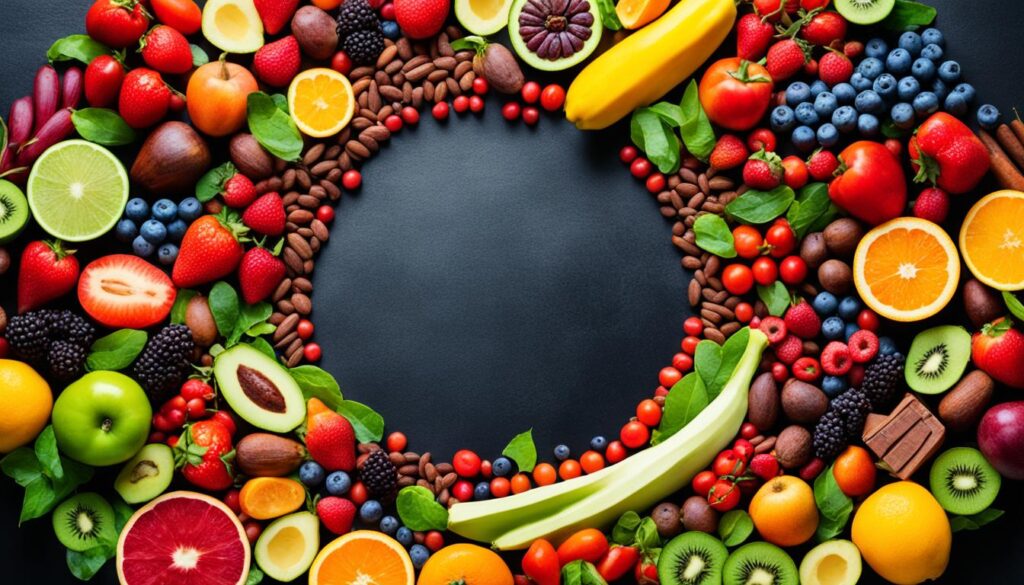
While cocoa has demonstrated promising potential in safeguarding the skin from the harmful effects of UV radiation, it’s important to acknowledge the array of other natural alternatives that can complement or serve as additional lines of defense. From antioxidant-rich foods to topical sunscreens and protective clothing, these natural remedies offer a versatile approach to comprehensive UV protection.
Other Antioxidant-Rich Foods
In addition to the potent antioxidants found in cocoa, there are numerous antioxidant-rich foods that can contribute to endogenous photoprotection. For instance, rosemary extracts have been proven to help against UV damage, with individuals experiencing significant benefits after using rosemary and lemon extracts for as little as 8 weeks. Similarly, studies have shown that St. John’s Wort cream can significantly reduce UVB-induced erythema compared to a placebo. Calendula, known for its wound-healing properties, can also be used to support healthy skin and improve elasticity and hydration, while elderflowers have demonstrated broad-spectrum UV protection and high photostability, making them suitable for sunscreen products.
Incorporating a diverse array of antioxidant-rich foods, such as these, into your diet can provide an additional layer of natural protection against the damaging effects of UV radiation.
Topical Sunscreens and Protective Clothing
While dietary choices and internal antioxidant support are crucial, it’s also important to consider external protection strategies. Topical sunscreens remain an essential tool in the arsenal against UV damage, offering a physical barrier to shield the skin. Additionally, UV-protective clothing, such as hats, long-sleeved shirts, and sun-shielding fabrics, can provide an additional layer of defense against the sun’s harmful rays.
By incorporating a comprehensive approach that includes cocoa-based products, antioxidant-rich foods, topical sunscreens, and protective clothing, individuals can create a multi-faceted strategy to safeguard their skin and maintain its health in the face of UV exposure.
Conclusion
Throughout this exploration, we’ve uncovered compelling evidence that cocoa, with its rich concentration of antioxidant flavanols, holds the potential to safeguard the skin against the damaging effects of UV radiation. The studies reviewed have showcased cocoa’s ability to mitigate signs of photoaging, such as wrinkles and age spots, as well as its promising role in reducing the risk of skin cancer development.
The key takeaway is that incorporating cocoa-based products, such as dark chocolate or cocoa powder, into one’s diet can be a natural and effective way to enhance UV protection and promote overall skin health. By harnessing the power of antioxidants found in cocoa, individuals can bolster their skin’s defenses against the harmful impacts of sun exposure, which is essential for maintaining a youthful, radiant complexion.
Ultimately, the importance of implementing robust UV protection strategies, including the use of cocoa, cannot be overstated. As we continue to uncover the nuances of cocoa’s skin-nourishing properties, the scientific community is poised to further elucidate its role as a natural solution for UV damage prevention. By embracing this research and integrating cocoa into our daily lives, we can take proactive steps towards safeguarding the health and beauty of our skin for years to come.
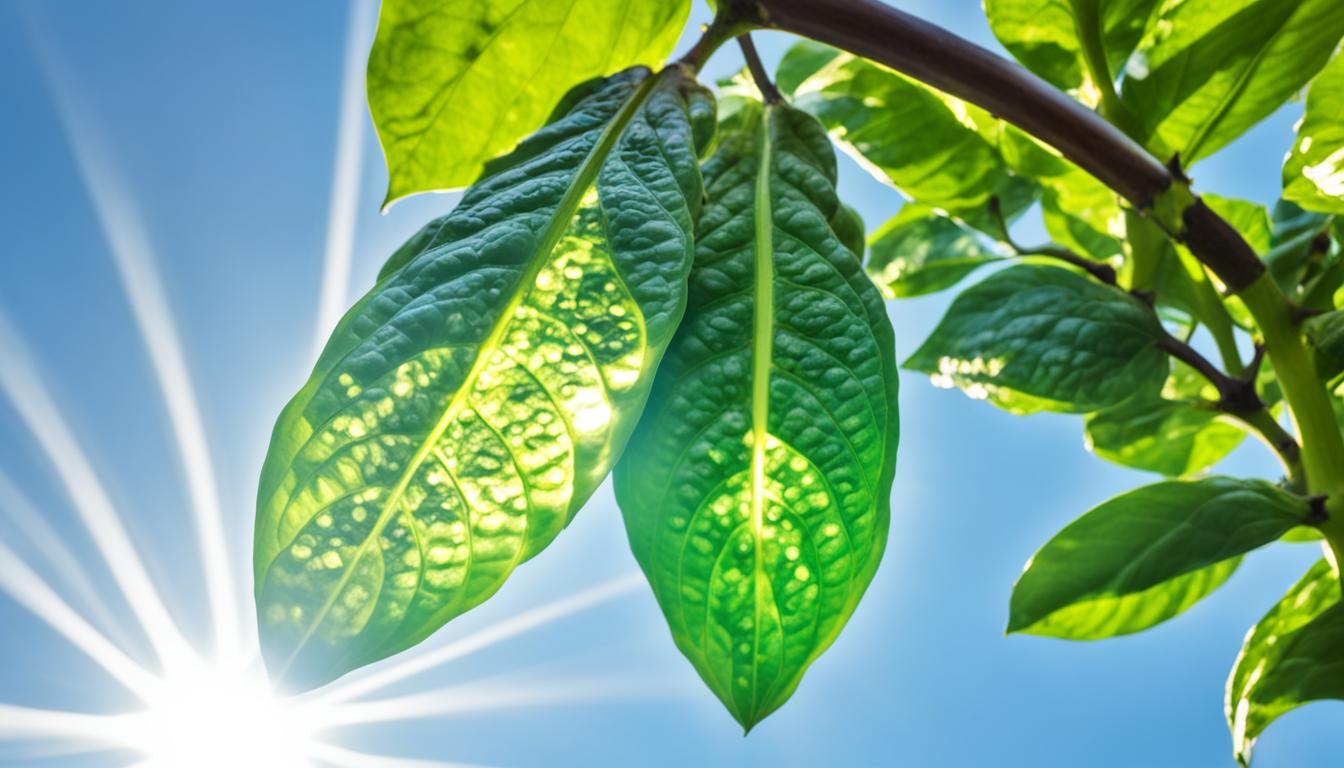
Leave a Reply